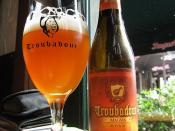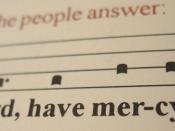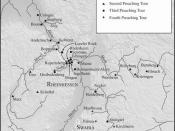Appreciation of Music Notes
Pitch: highs and lows of the sound
Octave 2:1 ratio of vibrations
Western music divides in 12 pitches
Distance between notes: intervals
Scales: Chromatic (12) Major/Minor: (7)
Melody: 1 note, Harmony: 2 or more notes
Pitch notation: five line staff, round note
heads first 7 letters of alphabet, sharps and flats
Duration: length of sound in time
Beat: steady, regular pulse
Subdivision of beat: shorter rhythems within beat
Accent: added to notes,
Synocopation: accents that arent expected
Tempo: speed of beat (italian)
Rhythmic notation: note head stem, flag, beam
Dynamics: volume
Notations of dynamics
Gradual dynamic changes
Timbre: quality of sound (tone color)
Overtones series, ears fooled, think only one pitch
Actually hearing many, different instraments
Bring out different over tones (in terms of volume)
Style period: historical periods with similar compositional traits
Prehistoric: circa (around) 500 B.C.E, functional music,
voice and percussion first instraments
Ancient: 500B.C.E.-450
C.E, rise of ancient greek city states (athens)
Functional, used at weddings, funerals, religious ceremonies
Religious CeremoniesL 9 goddesses, Muses- origin of music
Cult of Apollo, string instrament, origin of lyre
Cult of Dionesis: wind instrament (aulos)
Pathagerous discovers perfect ratio (octave)
Music of spheres (music=math)
Doctrine of Ethos- bravery, fear, etc.
Scales- octave divided into 7 notes called modes.
(Ionian, Lydian, Aeolian, etc.)
Melodic Texture: monophonic - one thing happening
Homophonic- more than one thing happening
Middle Ages: 450-1425 C.E. Called medieval ages ,dark ages
Concept of form originated. How to graph it.
A) Sacred music: catholic church, professional
Composers/musicians= monks, priests
A cappella: voice only, instraments were devils music
Plainchant: Gregorian chant- codified by Pope Greg. 1 (600)
Sacred text, a cappella,, Mediveal modes (old greek modes) monophonic texture
Hildegard of Bingen: Nun, composer, romantic chant
Thoughroughly Composed: continually new music
Perotin: Priest, notre dame, greatest four...


